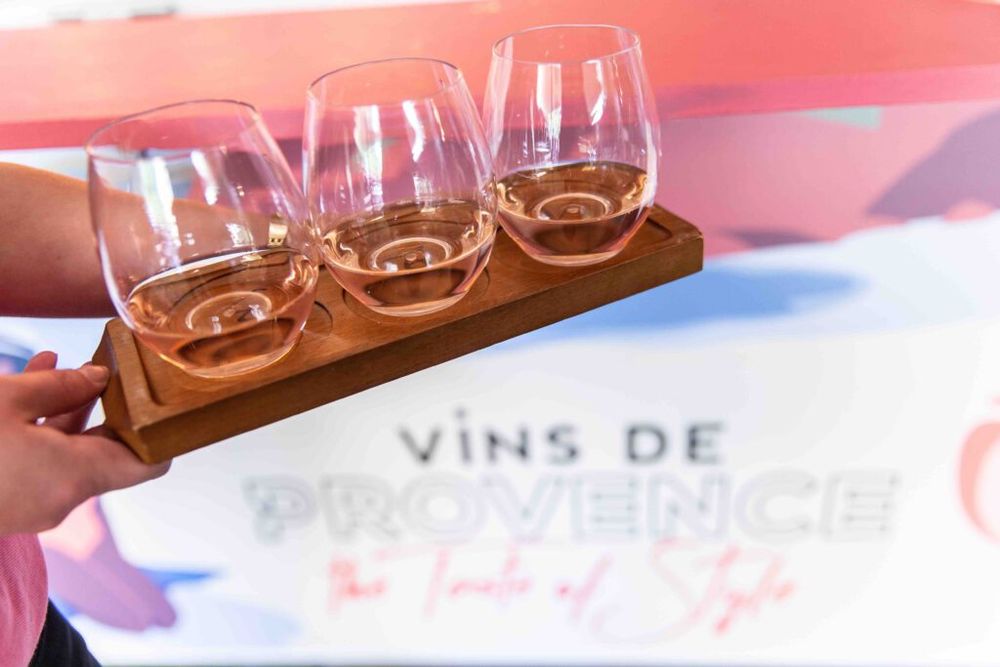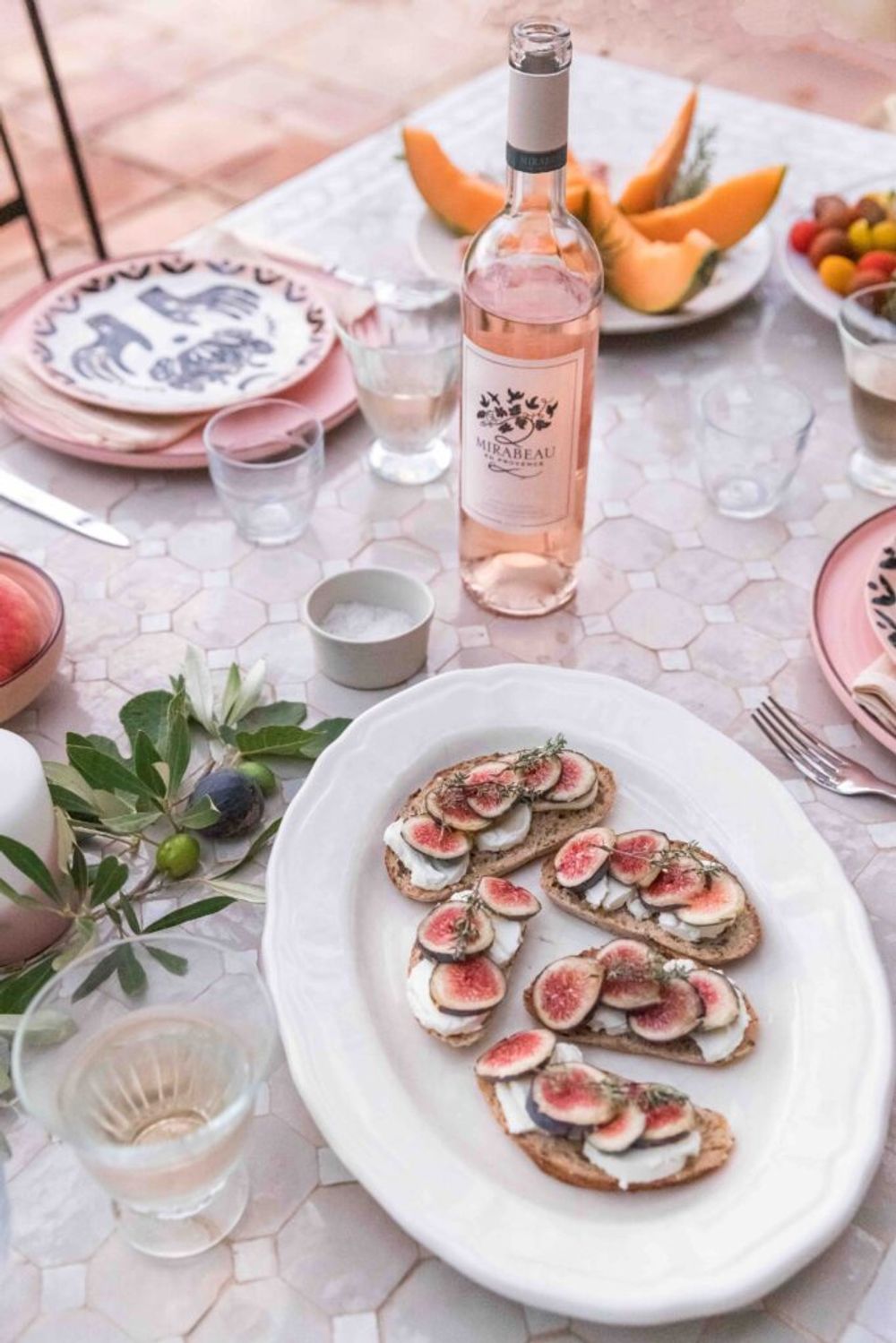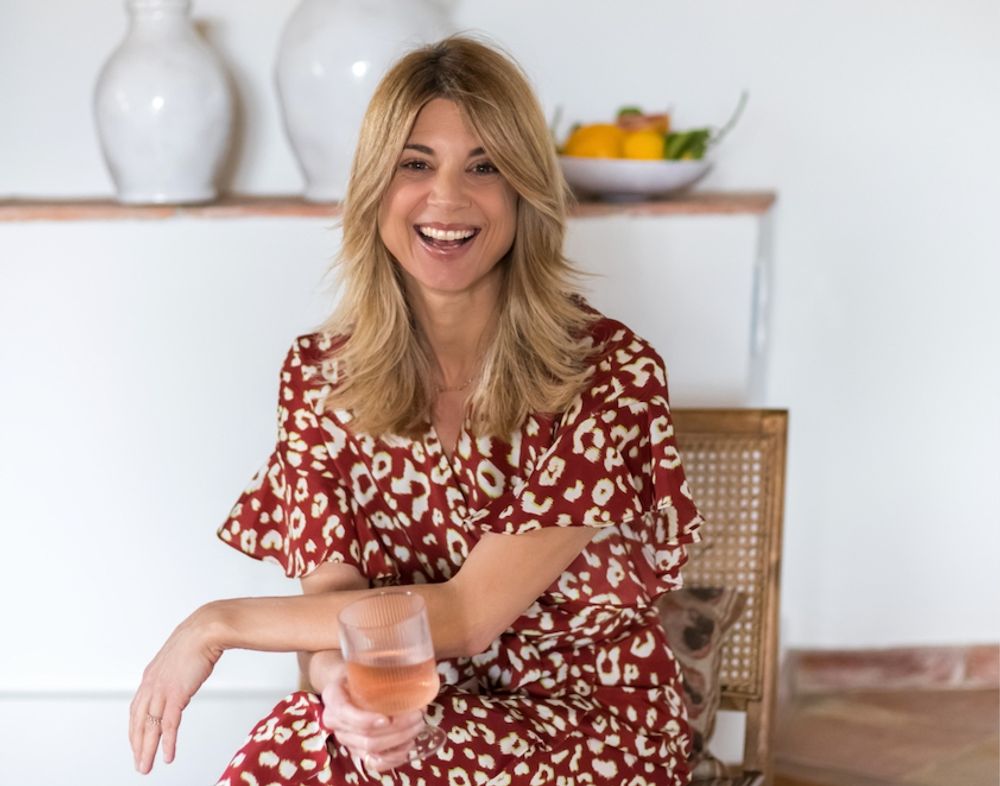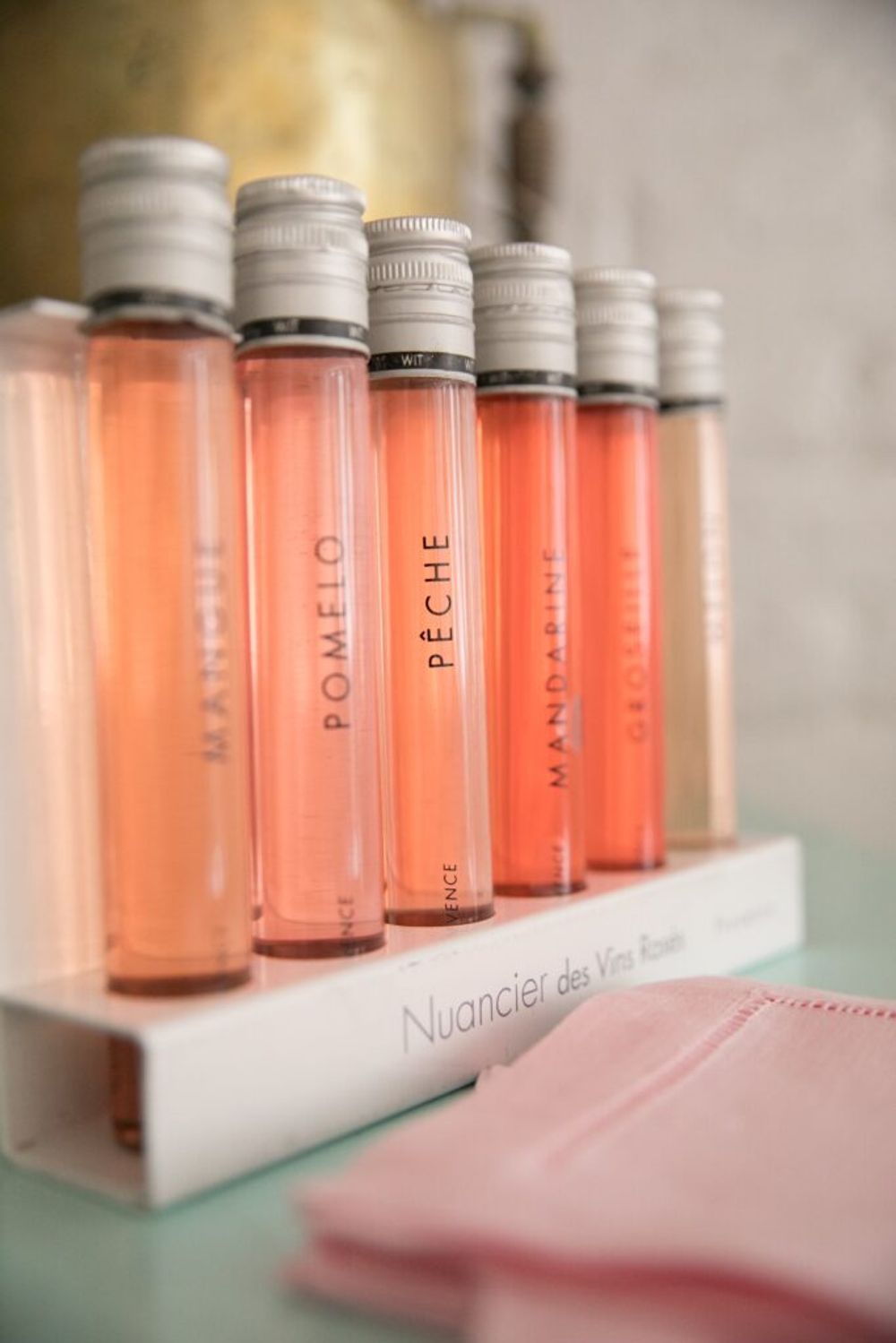Wine regions don’t enjoy the sustained growth and success that Provence has had without a clear, focused strategy. Mirabeau’s Jeany Cronk explains why she is so keen to be working with the CIVP to shape and deliver the strategy.
As first questions go, it was probably not the easiest, or fairest. But to get a sense of just how far Provence has come as a wine region since Jeany and Stephen Cronk first decided in 2009 to swap their lives in London to set up a home, and then a winery, in the region, I asked, what changes she’d seen since their arrival.
“There were already amazing wines being made here. Provence had developed this pale, fresh aromatic style which has become so ubiquitous with the region. The wineries here are so dynamic and over the years, this style has gone from strength to strength.”

Provence’s natural beauty and proximity to the sea has long made it a major tourist attraction and now its wines are helping to take Provence’s story around the world
What has really helped drive the changes since the Cronks’ arrival really comes down to the capital investment that the CIVP and individual producers have been willing put into the area. This financial commitment by the biggest and smallest wineries helps them to collectively better understand the wines made in Provence and what can be done to make them improve consistently.
“There was a real sense of the ambition,” says Cronk about the family’s early days settling into their new lives. “You could go to any grower, be it an independent or a co-operative, and they were all looking at how they could improve. That spirit is very much alive here today,” she adds.
Indeed, even with all the success that Provence has had in the last 10 years, it is no way resting on its laurels.
International success

Provence’s rosé success in recent years has been driven by how quickly it has been taken up around the world, particularly in the US
Provence’s winemakers might be forgiven for looking back on the last few years with some pride. Exports of Vins de Provence rosé wines to the UK grew by an impressive 51% in volume and 51% in value from 2019 to 2020, with a total of 11.56 million bottles exported compared to 7.67 million in 2019, making the UK the second largest export market globally in terms of volume, according to the latest official figures from French Customs/ CIVP.
The Provence region is now, on average, producing 166 million bottles of wine a year, of which 91% is rosé (151 million bottles were produced in 2020), from its three main appellations : Côtes de Provence, Coteaux d’Aix-en-Provence and Coteaux Varois en Provence. Together they produced 1,246,010 hl in 2020, compared to 1,073,768 hl in 2009 (French Customs/ the CIVP).
What’s particularly impressive about Provence’s performance is that this growth has been largely driven by maintaining its premium price point.
Open to the world
The open, friendly welcome the Cronks got from the local community when they arrived was not only massively appreciated at the time, but is also arguably a key reason why Provence has done so well internationally. As one of the world’s most popular tourist spots, the people of Provence are used to throwing open their doors, villages and towns to visitors. “That friendliness is so important. They embrace people from all over the world here. And that does extend to the wine sector too and that has been a really positive factor in why Provence has done so well.”
“There is such a fraternal approach here,” Cronk says. “We were given the support and help we needed. Our growers had faith in us from the start. That sense of community and adventure and openness has really served the region well. It is a constantly dynamic place to be with new people arriving which makes it so interesting and diverse and this can only create a positive environment.”
Provence’s natural beauty and identity also comes through in the commercial reality of making wine. It is not only an incredible place to visit but it is also a unique place to make wine: it is influenced by the sea if you look one way, and the mountains of the Alps if you look the other. It’s not surprising people are so passionate about the region and love it so much. The wines are all linked to these historic aspects too.
There is a certain buzz, pizazz to Provence that no other classic French wine region has. It attracts high profile people who put down roots. This creates its own two-way relationship where people are constantly talking about the region.
United voice

Provence’s look, imagery and escapist appeal is all encapsulated in its pink pale rosés
Whilst producers like the Cronks are more than capable of marketing, promoting and creating an energy around their own brands, the CIVP plays a key role in helping Provence wine producers of all sizes benefit from a united voice and central marketing campaign. The CIVP is essentially responsible for the “look and feel of the Provence brand” which remains the only specialist rosé wine region in the world.
Cronk says she was particularly pleased to become a board member of the CIVP in 2015. Not only does it give her a powerful voice on the region’s governing body, but she can give an added female perspective too. “It was a great honour for me to join and I am really enjoying working with the marketing and export teams.”
“It’s important to have leading producers on the CIVP board as they can give real clarity and insights into what is happening in different markets and are closer to the “coal face” when it comes to negotiations with major customers,” says Caroline Benetti. “We work together to rejuvenate the image of Provence,” she adds, “to have more of a coherent brand image and where the region is going.”
The fundamentals of that strategy is to constantly push Provence’s premium image in an engaging and relevant way that consumers can understand.
“The other thing to stress,” says Benetti, “is that Provence is not a huge wine region and it needs this focus to ensure it is making the most of the assets it has with a limited supply, hence the gradual, but carefully managed expansion of vineyards to increase potential volume. Not having an infinite amount of wine to sell certainly helps the premium message.”
The 2020 vintage looks like inadvertently playing its part in managing supply as Provence was also hit by the damaging frosts that hit France last month which could see a single digit drop in volumes depending on how the budding period goes.
Gastronomic wines

Positioning Provence rosés as being perfect with food is how the CIVP hopes to further its links with chefs, and the premium on-trade
Showing how well the new styles of dry, pale, elegant Provence rosés go with food is central to the CIVP’s strategy: this style is in line with the image and reputation of Provence as home to many Michelin star, as well as quality, neighbourhood restaurants, all served with a plentiful supply of wonderful local fresh produce.
“We want to extend people’s interest in Provence rosé beyond the pools and terraces and apéritifs and for itto be seen as a gastronomic wine in its own right,” says Cronk.
Provence has also grown up enough as a wine region to start introducing more of what Cronk calls “left field wines” which offer more “complex styles” and lesser known blends of grapes. These can also help shine the light on the big steps that have taken place in the five terroir designations, based on soil type, climate, people and know-how that have been introduced in recent years in Côtes de Provence. These include Fréjus (2005), Sainte-Victoire (2005), La Londe (2008), Pierrefeu (2013) and Notre-Dame-des Anges (2019), and provide Provence with the opportunity to promote its more “terroir-focused” wines.
Benetti says it is potentially very exciting for the region as it will both help its credibility and reputation as a serious wine producing area. “It also reflects the growth of the region. By focusing on soil types, terroir and climate, the region has shown its wines to the trade and sommeliers and the press, but this allows those conversations to go a little deeper.”
Social media appeal
While some other wine regions may have a richer history and more traditions than Provence, few can match it for its beauty. It is after all what attracts the hundreds of thousands of tourists who travel there each year and it has fast become the wine region for the social media age – #Provence, for example, on Instagram has 4.7m posts.

The #Provence Instagram page captures what Provence means to different people
“We are so lucky to have this amazing region to work in,” says Cronk. “Provence really is the ultimate escapist wine region. You can buy a bottle, close your eyes and smell the lavender. It has that wonderful transportive quality that we want to use to attract people’s attention.”
The CIVP has worked hard in recent years to collaborate with carefully selected influencers who can capture Provence’s unique, magical qualities and share them with their followers.
“We want to show consumers how Provence wines fit in with their lifestyle, with the food they eat and share with their friends year-round rather than limiting their consumption to just for summer,” adds Benetti.
Over the past 12 months, the CIVP has switched a lot of its marketing investment to social media in order to be able to continue to talk with and listen to its core consumer base. “Wherever they were in the world, we wanted to bring Provence to our consumers, giving them a daily dose of Provence and it has worked very well,” Cronk says.
This has meant primarily using Instagram to appeal to younger consumers, Facebook for a slightly older audience and Twitter to engage with the trade.
Both Mirabeau and the CIVP have been looking to engage with their audiences for some time, taking the time to really understand what it is about the region that people love and how wine can make that relationship ever stronger, placing the consumer at the heart of everything they do.
Provence is looking to talk about wine in a way that people understand and to quote advertising legend, Sir John Hegarty, ‘keep the magic, and lose the mystery’.
Place in the world

Jeany Cronk says she is delighted to be a board member on the CIVP and can share her personal experiences as a producer but also offer woman’s voice on the region’s wine issues
As the only wine region in the world where 91% of the production is rosé, it’s hard to compare Provence to anywhere else, but if pushed, then Champagne would be the area it most looks to.
“How Champagne treats occasions has been something we have looked at closely,” says Cronk. “That desire to premiumise and take consumers on a journey is something that Champagne has done exceptionally well. What Provence has brought to life is to present a slightly more relaxed occasion to enjoy our wines in,” says Cronk.
It also does intensive comparative tastings against other regions in the world and the different silts of rosé they are producing. The CIVP is actually pleased to see the category as a whole grow around the world, for with limited production it can’t satisfy its customers’ needs at all price points and volume levels.
If more countries are able to satisfy different price points, it leaves Provence free to explore different, potentially more complex styles, with more ageing potential, and use of oak. That’s making wines that go well with food is such a key focus for the region.

The CIVP will continue to find new and innovative ways to take Provence’s message and image to the trade and consumers around the world
Provence’s on-going push to more sustainable winemaking will be an added attraction for some consumers, as it increase its drive towards organic winemaking and cutting its carbon footprint. Today 31% of the Provence vineyards holds an environmental certification such as Organic Agriculture or High Environmental Value (a French label promoted by the French Agricultural Minister).
“Farming more environmentally just makes sense,” says Cronk. “We live in this incredible place, but we are just stewards and guardians of it. We want to take the steps now that allow future generations to farm and live here.”
For its part, Mirabeau works with regenerative agricultural methods at their own estate, using cover crops in the winter and animals grazing in the spring to help its vineyard become healthier and more sustainable. It is one step towards looking to become one of the few wine producers in the world to acquire B Corp status, a certification that takes into account every part of your business from supply chain to staffing.
Cronk fully appreciates what a commitment that is going to be for the winery, but is also very much in step with Provence’s and the CIVP’s goals to keep pushing forward.
“There is also the thought leadership side of things and it is incumbent on us as the leading area in rosé to be taking these steps,” she adds.
- You can find out more about the CIVP and the work it does as its website here.
- You can follow its activity on social media on Instagram at @vinsdeprovenceuk, Facebook @Provencewinesuk and Twitter, @ProvencewinesUK.










































